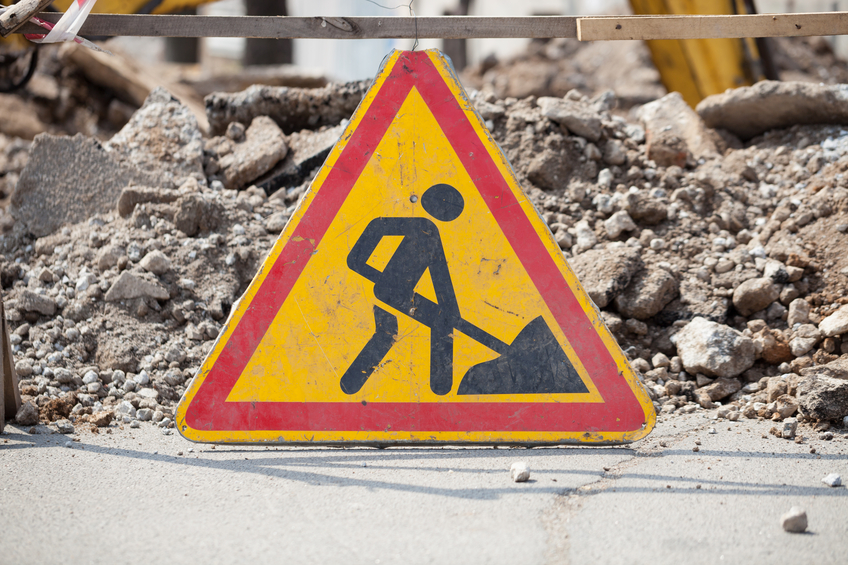Virginia Construction Safety 16 PDH Discount Package 3
Protecting Construction Workers in Confined Spaces (Y03-002)
Ground-Fault Protection on Construction Sites (E01-001)
Safe Rooms and Shelters - Structural Design Criteria (F05-004)
Safety Evaluation of Centerline and Shoulder Rumble Strips (C04-048)

This online engineering PDH course provides information on effective ergonomic interventions that help lower the physical demands of manual material handling (MMH) work.
Manual material handling work contributes to a large percentage of over half a million cases of musculoskeletal disorders reported annually in the United States. Musculoskeletal disorders often involve strains and sprains to the lower back, shoulders, and upper limbs. They can result in protracted pain, disability, medical treatment, and financial stress for those afflicted with them.
Effective ergonomic interventions can lower the physical demands of MMH work tasks, thereby lowering the incidence and severity of the musculoskeletal injuries they can cause. Their potential for reducing injury-related costs alone make ergonomic interventions a useful tool for improving a company’s productivity, product quality, and overall business competitiveness.
This 3 PDH online course is applicable to engineers, managers and supervisors who are interested in learning more about ergonomic interventions that reduce the physical demands of manual material handling work.
This PE continuing education course is intended to provide you with the following specific knowledge and skills:
- Familiarizing with the basics of manual material handling
- Understanding the importance of improving the workplace
- Understanding the conditions associated with the development of injuries in manual material handling tasks
- Learning about the different types of ergonomic improvements
- Knowing easier ways to manually lift, lower, fill, or empty containers
- Exploring alternatives to the manual handling of individual containers
Upon successful completion of the quiz, print your Certificate of Completion instantly. (Note: if you are paying by check or money order, you will be able to print it after we receive your payment.) For your convenience, we will also email it to you. Please note that you can log in to your account at any time to access and print your Certificate of Completion.

This online engineering PDH course provides guidance on the Confined Spaces standard that applies to construction work performed in confined spaces. It addresses the most common issues that employers face and provides sufficient detail to serve as a useful compliance guide.
A confined space is a space whose configuration and/or contents may present special dangers not found in normal work areas. Confined spaces may be poorly ventilated and, as a result, contain insufficient oxygen or hazardous levels of toxic gases. Working in a tight space can prevent a worker from keeping a safe distance from mechanical and electrical hazards in the space. Fumes from flammable liquids in a poorly ventilated area can reach explosive levels.
Such hazards endanger both the workers in the confined space and others who become exposed to the hazards when they attempt to rescue injured workers. Therefore, employers must evaluate all confined spaces in which their employees work to determine whether hazards exist and whether the work to be done has the potential to create such hazards in the future.
This 3 PDH online course is applicable to engineers, architects, managers and contractors whose duties involve work in confined spaces and are interested in learning about the proper approach to safety while working in compliance with the Confined Spaces standard.
This PE continuing education course is intended to provide you with the following specific knowledge and skills:
- Familiarizing with confined and permit spaces
- Gaining a general overview of the Confined Spaces standard’s requirements
- Learning about employer responsibilities and worker training
- Understanding the content of the permit space program
- Learning about the alternate procedures for certain permit spaces
- Understanding the responsibilities of entrants, attendants and entry supervisors
- Exploring different rescue and emergency services
Upon successful completion of the quiz, print your Certificate of Completion instantly. (Note: if you are paying by check or money order, you will be able to print it after we receive your payment.) For your convenience, we will also email it to you. Please note that you can log in to your account at any time to access and print your Certificate of Completion.

This online engineering PDH course provides OSHA's electrical requirements for ground fault circuit interrupters to protect workers against electrical hazards.
With the wide use of portable tools on construction sites, the use of flexible cords often becomes necessary. Hazards are created when cords, cord connectors, receptacles, and cord- and plug-connected equipment are improperly used and maintained. Shocks, burns or fire-related fatalities resulting from humans exposed to non-grounded equipment significantly contribute to the overall number of fatalities in the construction workplace.
OSHA recognizes that non-grounded equipment present serious hazards to all workers involved. Therefore, OSHA developed the Electrical Standard that contains the requirements for ground fault circuit interrupters (GFCIs) to protect workers against 120-volt electrical hazards on the construction site.
This 1 PDH online course is applicable to employers/business owners, engineers, managers, electricians, construction workers and any other personnel working with or around energized equipment that require grounding.
This PE continuing education course is intended to provide you with the following specific knowledge and skills:
- What is a GFCI
- What are some other ways to prevent electrical injury
- How can employers protect their workers
- What is the assured equipment grounding conductor program
In this professional engineering CEU course, you need to review OSHA 3007, "Ground-Fault Protection on Construction Sites".
Upon successful completion of the quiz, print your Certificate of Completion instantly. (Note: if you are paying by check or money order, you will be able to print it after we receive your payment.) For your convenience, we will also email it to you. Please note that you can log in to your account at any time to access and print your Certificate of Completion.

This online engineering PDH course discusses explosive threat parameters and measures needed to protect shelters from blast effects. Structural systems and building envelope elements for new and existing shelters are analyzed; shelters and FEMA model building types are discussed; protective design measures for the defined building types are provided, and design guidance and retrofit issues are presented. The purpose of this course is to offer comprehensive information on how to improve the resistance of shelters when exposed to blast events.
This 5 PDH online course is applicable to engineers, planners, architects, landscape designers, construction and operations personnel, security and law enforcement agents, as well as consultants and contractors who are in gaining a better understanding of the structural design criteria of safe rooms and shelters.
This PE continuing education course is intended to provide you with the following specific knowledge and skills:
- Understanding explosive threat and blast effect parameters
- Learning the various methods of hardened construction
- Design of new construction vs. retrofitting existing buildings
- Familiarizing with the different FEMA shelters and model building types
- Determining adequate design and construction of buildings exposed to various forces
In this professional engineering CEU course, you need to review Chapter 2 "Structural Design Criteria" of the FEMA Publication tilted, "Safe Rooms and Shelters" (FEMA 453).
Upon successful completion of the quiz, print your Certificate of Completion instantly. (Note: if you are paying by check or money order, you will be able to print it after we receive your payment.) For your convenience, we will also email it to you. Please note that you can log in to your account at any time to access and print your Certificate of Completion.

This online engineering PDH course describes the strategy involving the application of shoulder rumble strips (SRS) and centerline rumble strips (CLRS) in combination. This strategy is intended to reduce the frequency of crashes by alerting drivers that they are about to leave the travelled lane. While research has been published on the safety effectiveness of SRS or CLRS used in isolation, the effectiveness of the combined treatment has not been shown.
Geometric, traffic, and crash data were obtained at treated two-lane rural road locations in Kentucky, Missouri and Pennsylvania. To account for potential selection bias and regression-to-the-mean, an Empirical Bayes (EB) before-after analysis was conducted using reference groups of untreated two-lane rural roads with similar characteristics to the treated sites. A slightly different approach was required for the analysis of the treatment sites in Missouri, which is installing rumble strips on two-lane rural roads whenever a resurfacing project is undertaken. As a result, a suitable reference group with no rumble strips for this road type presently or in the near future did not exist. The analysis also controls for changes in traffic volumes over time and time trends in crash counts unrelated to the treatment.
This 4 PDH online course is intended for traffic engineers, design professionals and construction personnel who are involved in the design and application of centerline and shoulder rumble strips.
This PE continuing education course is intended to provide you with the following specific knowledge and skills:
- Understanding the background information about the strategy and the study
- Familiarizing with previous research of SRS and CLRS
- Learning about the Empirical Bayes (EB) methodology used for the evaluation
- Understanding the data collection of the three States in study
- Familiarizing with the SPFs developed for each State
- Familiarizing with the before-after evaluation results of crashes
Upon successful completion of the quiz, print your Certificate of Completion instantly. (Note: if you are paying by check or money order, you will be able to print it after we receive your payment.) For your convenience, we will also email it to you. Please note that you can log in to your account at any time to access and print your Certificate of Completion.